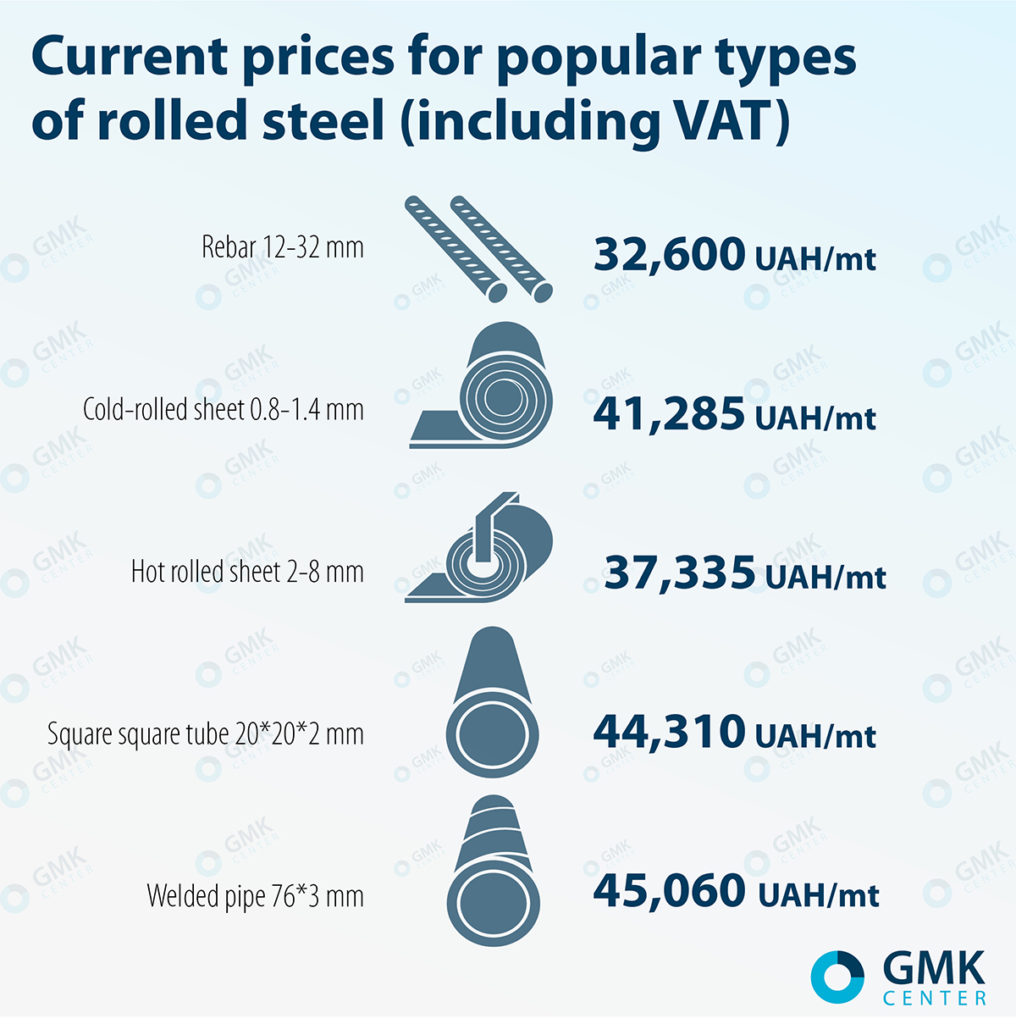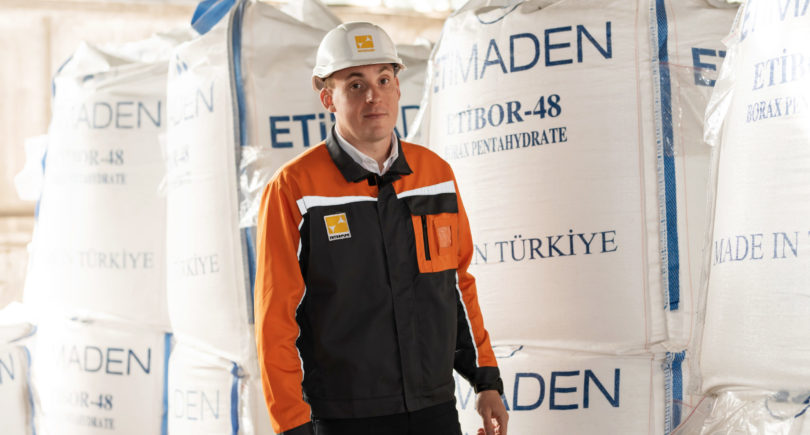
Interviews steel trade 7058 29 November 2022
The head of Metal Holding Trade – about the situation in the Ukrainian steel trade market
The steel trade market of Ukraine, like the entire economy of the country, is in a difficult situation. The dynamics of demand for steel products is fully correlated with the situation in a specific region or branch of the economy. Currently, steel trading companies have to reassess the needs of customers in steel products, since customer companies can drastically change the range of their products, and in the event of a shortage of Ukrainian steel, they can increase its import. Sergiy Krut, the head of Metal Holding Trade company, which specializes in sales of black and stainless steel, as well as aluminumm, told about it in the interview for GMK Center.
What are the main problems of the steel trade market?
– The main problem of the industry is the war, the rest are its derivatives. I can say that by October 10 the situation was improving. From month to month, we had a positive trend in the growth of the sales volume, although, we have not yet reached the pre-war level. By the end of the first decade of October, the solvency of clients increased, and there were positive exchange rate expectations.
Everything deteriorated sharply after the first strikes on the energy infrastructure. Due to interruptions in the supply of electricity, the demand for steel products fell by approximately 65%. However, there is a seasonal decrease due to the onset of the cold season.
Shelling of the energy infrastructure exacerbated already existing problems – weak demand, lack of working capital among customers, etc. At the same time, not all of our customers can afford to purchase and install backup generators. Many of them have simply ceased operations, because due to the specifics of their production processes and equipment (voltage surges can disable it), it is easier for them to temporarily stop. Some clients switched to a night schedule.
Now we have to listen very carefully to the needs of customers, because in order to survive, they can drastically change the range of their products. For example, to make small stoves instead of steel structures.
How has the domestic demand for rolled steel changed in terms of sectors of the economy?
– If we talk about the demand in general, then after the start of the war, it fell sharply. In March-April, we finalized pre-war orders. From the middle of May to the beginning of June, a certain increase in demand for both black and stainless rolled steel and aluminum began. In the company’s sales structure, black rolled steel accounts for 70%, stainless steel – 25%, and aluminum – 5%.
Across industries, demand from builders, who have frozen many facilities, has greatly decreased. In fact, they are now completing projects that had a high level of readiness (80% and above). But at this stage of construction, steel consumption is minimal, since it is about internal work.
The situation is a little better in mechanical engineering, where defense orders prevail.
Relatively high demand for the steel was observed from the agricultural and food industry enterprises. The enterprises of the agro-industrial complex have been accumulating funds for the purchase of land since last year, while postponing the purchase of agricultural machinery. However, such a situation has developed that the purchase of land is not very relevant now, but equipment is still needed. Therefore, we saw a stable demand for steel products from agricultural machinery producers.
Export-oriented enterprises were the least affected. Especially those that do not have problems with working capital, because Western customers are now afraid to work on prepayment with Ukrainian companies.
Demand from private individuals decreased to a lesser extent than in the construction industry. Although many of them also postponed their work until the spring of next year, some still decided not to abandon the planned.
How much have the prices of steel products, sold by the company, changed?
– At the beginning of the war, domestic prices for steel products rose sharply, and no one understood what would happen next. When some certainty appeared, prices went down. This was part of a global downward trend that continues to this day.

How has domestic demand changed in terms of types of steel products?
– The structure of demand has changed under the influence of the needs for steel products of specific industries. In particular, the field of construction has sharply reduced the consumption of rebar. If earlier we estimated the market at 75,000 tons of rebar per month, now it is about 25,000 tons. The same applies to the demand for construction beams and shaped rolled products for construction purposes.
The situation is somewhat better with the demand for sheet steel from the mechanical engineering side and structural circles, which are requested by enterprises working on defense orders.
There was also a demand for graded rolled steel, but its nature depended on the scope of application in a specific industry.
Is there a shortage of Ukrainian steel products? Does import make it possible to completely cover existing needs for steel products?
– Of course, there is a shortage. After the destruction of Azovstal and Ilyich Iron and Steel Works of Mariupol, there are no more producers of thick sheet from 10 mm and above in Ukraine, and the need for it is quite large. This need had to be met with supplies from Europe and Turkiye. We work with more than a dozen suppliers and are in talks to bring in others.
The same applies to the construction beam. Due to the stoppage of many constructions, the need for beams is small, and it is covered by imports.
We also import a part of rolled steel (graded rolled steel – circles, etc.) produced by ArcelorMittal. Currently, they do not produce such products and sell leftovers.
How have sales of steel products changed by regions?
– If the military situation in a certain region improved, economic activity and demand for steel products increased there. For example, as soon as the Russian army was expelled from the Kharkiv region, enterprises in Kharkiv immediately sharply increased their requests for steel products. The situation is similar in Chernihiv, where the demand is gradually recovering, although at the beginning of the siege of the city in the spring, shells just flew to our site.
Many industrial enterprises have relocated to safe regions of the country, and to a certain extent we have experienced an increase in demand for their products, especially in Lviv and Vinnytsia.
The only branch whose work we had to temporarily stop is located in Zaporizhzhia. We evacuated all personnel from there after the beginning of strong attacks on the city.
How did logistics become during the war?
– Our logistics has changed a lot, it has become very diversified geographically, although these difficulties can be overcome. If earlier our containers went to Odesa, now we have moved to Gdansk and Gdynia, to a lesser extent – to Rotterdam and even Hamburg. From there, we already transport by road and to a lesser extent on railway platforms. On the good side, I can note the decrease in the cost of delivery to European ports compared to the times of the coronavirus, when the cost of freight broke all records.
In addition, before the conclusion of the “grain agreement”, our logistics through the Ukrainian Danube ports were impossible, because they were occupied with grain cargoes. After the opening of the grain corridor, we were able to partially switch our imports to these ports. Queues for freight railcars at the western borders also decreased a little. As a result, auto logistics began to become cheaper. As an example: if earlier a 20-ton truck from Turkiye cost 270,000 hryvnias, today it costs about 130,000 hryvnias.
How do you see the future prospects of the steel trade market?
– While the war continues, it is difficult to talk about the prospects of the market in general. Currently, we are trying to respond to current challenges – to optimize all processes as much as possible and minimize the company’s costs. We believe in the Armed Forces and in our victory. After the war, there will be a long period of restoration of all the destroyed infrastructure, which will require a lot of steel products. This means that we will all have a lot of work to do, and we are ready for it.





